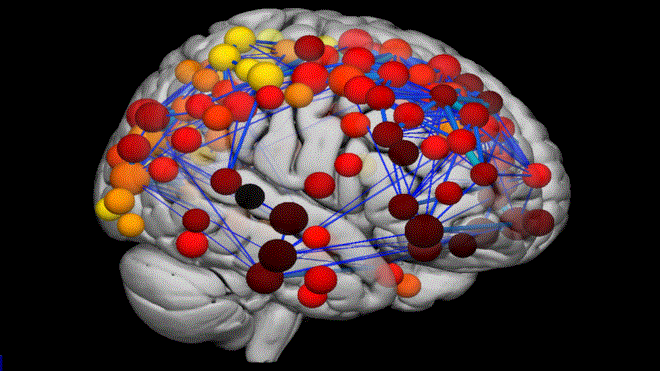Brain scan study finds links between adolescent brain development and mental health disorders

– “Brain hubs”, courtesy of University of Cambridge
Scans reveal how teenage brain develops (BBC News):
“The team from Cambridge’s department of psychiatry scanned the brains of 300 people between the ages of 14 and 24. While the areas associated with the basic functioning of the body such as vision, hearing and movement are fully developed by adolescence, the areas associated with complex thought and decision making are still changing…
You can think of the brain as a global airline network that’s made up of small infrequently used airports and huge hubs like Heathrow where there is very high traffic…The researchers then looked at the genes involved in the development of these brain “hubs” and found that they were similar to those associated with many mental illnesses, including schizophrenia.
The new findings indicate that maltreatment, abuse and neglect may well continue to disrupt the development of the higher brain functions during the crucial teenage years and so contribute to the emergence of mental illness.”
Study: Adolescence is associated with genomically patterned consolidation of the hubs of the human brain connectome (PNAS)
- Abstract: How does human brain structure mature during adolescence? We used MRI to measure cortical thickness and intracortical myelination in 297 population volunteers aged 14–24 y old. We found and replicated that association cortical areas were thicker and less myelinated than primary cortical areas at 14 y. However, association cortex had faster rates of shrinkage and myelination over the course of adolescence…We conclude that normative human brain maturation involves a genetically patterned process of consolidating anatomical network hubs. We argue that developmental variation of this consolidation process may be relevant both to normal cognitive and behavioral changes and the high incidence of schizophrenia during human brain adolescence.
To learn more:


